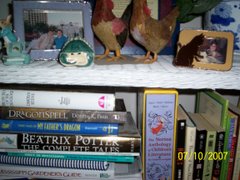Eleanor Roosevelt is on my mind because of a newspaper article commemorating the ratification of the Nineteenth Amendment to the Constitution of the United states giving women in America the right to vote. Eleanor Roosevelt supported a woman’s right to do many things thought unladylike including driving a car and flying in an airplane. We take so many things for granted today. But it really was not so long ago that a woman driving a car was a scandalous thing! Which brings me to Russell Freedman’s fabulous Newbery Honor Book Eleanor Roosevelt: A Life of Discovery.
Eleanor Roosevelt: A Life of Discovery
Russell Freedman
Newbery Honor
New York: Clarion Books, 1993
Born on October 11, 1884 to a somewhat affluent family, Eleanor was shy and always sought to please those around her. By the age of 10, Eleanor and her brother Hall were orphaned and living with their maternal grandmother. When Eleanor was 15, her grandmother fulfilled Eleanor’s mother’s wish and sent Eleanor to an exclusive London girls’ finishing school. There the shy wallflower blossomed into a school leader and an excellent scholar. Eleanor was described as “beloved by everybody” and she called her time at Allenswood “the happiest of my life.” She arrived feeling “lost and lonely . . . shy, awkward, starved for love and approval” but left in “triumph.” Her growth in self assurance continued when she returned home where she renewed an acquaintance with her distant cousin Franklin. Their friendship became love, and they were married March 17, 1905. The bride was escorted by her uncle, President Theodore Roosevelt!
As a wife and mother, Eleanor found happiness; but she continued her pursuit of personal growth, becoming more and more independent. She joined the League of Women Voters, taught classes in literature, drama, and American history at a private girls’ school in Manhattan; and when Franklin entered politics as governor of New York and later as the four term president of the United States, Eleanor herself became a powerful political figure. When Franklin was stricken with infantile paralysis, Eleanor became his eyes, traveling all around not only the United States but also around the world.
Eleanor was a First Lady of Firsts. She gave the first ever press conference given on the record by a First Lady. She held regular press conferences for women reporters only. She refused a limousine and bought herself a blue roadster which she drove herself. She flew in airplanes - all over the world, “serving as her husband’s personal investigative reporter and gathering material for her columns, articles, radio talks, and books.” During WWII, Eleanor visited American troops traveling “23,000 miles in a cramped, unheated, four-engined bomber.” She comforted the soldiers in hospitals. After Franklin’s death, Eleanor was asked to serve as a delegate to the first meeting of the United Nations General Council and was elected chair of the United Nations’ Human Rights Commission. She met the leaders of the world including Khrushchev. Eleanor never allowed herself to slow down. “ ‘Life has got to be lived - that’s all there is to it,’ she said.”
What an example to follow. Eleanor never sniped! She paved the way for the independent woman of today who can do anything she sets her mind to do. Freedman’s book is well written, well researched, and well packed with photographs of Eleanor’s life which give a fascinating glimpse of a changing American culture; and it is well worth reading the life of this amazing woman.
In my book . . . Long may we women drive! I became too long winded in my admiration of this woman. I tend to gush in my enthusiasm. We don’t have to agree with everything that Eleanor Roosevelt believed, but we have to admire a woman who could stand up to the secret service and drive her own car!


